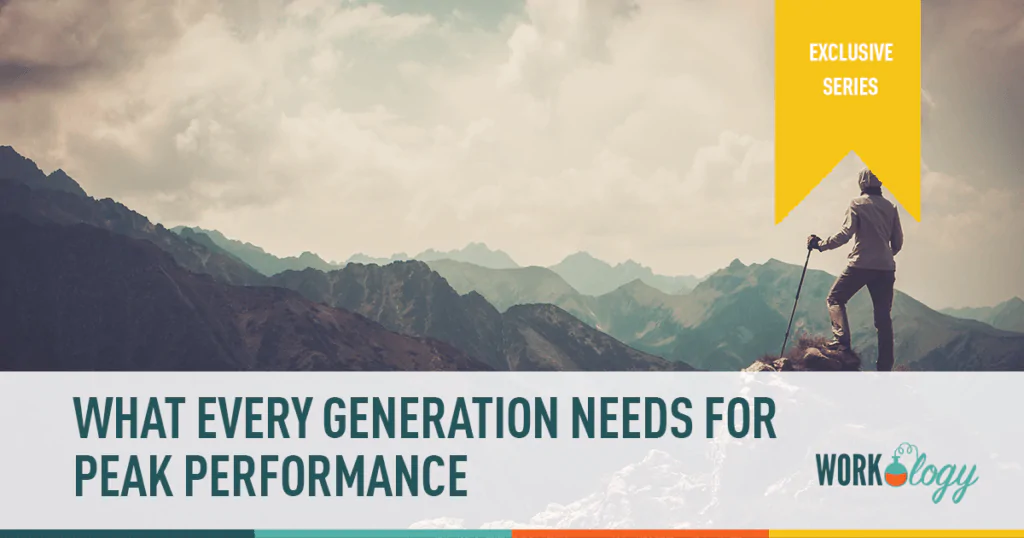Innovation depends on diversity. Furthermore, generational diversity can be just as influential as background variety. But mediating between many viewpoints is a difficult task that could bring us together or drive us apart.
There is no getting around the fact that our birth era affects how we view work and life and, eventually, how we behave. Particularly, how we connect, communicate, and conduct ourselves is influenced by politics, economics, technology, societal standards, and cultural references.
Companies aren’t immune to the broader shifts and strains society goes through. In fact, they reflect them. Today, there are five distinct generations of people in the workforce, which presents HR professionals with unique challenges.
Each of these generations are expected to seamlessly work together, despite having vastly different styles, levels of formality, and communication styles. They come from The Traditionalist Generation, born between World War One and World War Two, known to respect authority and formality and the Baby Boomer Generation, born in the late 40s-60s who have a reputation for questioning authority. Gen X also called the slacker generation work alongside Millennials, who are known for their tech-savvy and achievement orientation. Finally, we’ve seen the arrival of Gen Z, digital natives born from 1997 onwards and the newest cohort to join the workforce.
There seems to be a lot between these populations on the surface. However, the generation into which we are born is only one lens through which we can view the world. Our philosophies, preferences, and life experiences all influence how we behave. And when attempting to handle generational gaps, workplaces would be well to keep that in mind.
Businesses that seek to foster harmony between generations would be well to start by emphasizing their similarities. Use the traits that your employees share once you’ve identified them in internal messaging and team-building activities. When encouraging workers to take on a new task, managers should pay particular attention to these shared factors.
Every workplace is different, but there are challenges (and solutions to them) that we all share:
Performance Management Has to Catch Up to the New Pace of Businesses
We’re all dealing with the relentless pace of business. Regardless of whether you were born into the digital age or grew up writing letters, the onslaught of deadlines brought on by the fast pace of business is a challenge for everyone.
So the solution is a new lens to performance management! Companies moving toward a Continuous Performance Management process have been found to help all employees operate at their best, no matter what their generation. This approach includes frequent, lightweight conversations throughout the year that focus on goal setting, goal achievement, feedback and course correction, and career development. All of these activities improve employee engagement across the generations.
How We Work Has Changed, and Businesses Need to Adapt
The way we work has changed for all of us, meaning that teams expand or contract to meet today’s pace of business. The workplace is less hierarchical than ever, as barriers have been broken down to accommodate work teams that are needed quickly and temporarily.
So, how do we effectively motivate this complex workforce? By giving employees a sense that you trust them. You do this by setting clear objectives with employees and giving them the autonomy to get the work done. Managers today are learning that setting the goals clearly and relying on employees to create the solution or figure out the “how” to attain the goal is key!
Frequent Feedback is Critical for Every Employee
Employers are struggling when it comes to motivating their workers, with recent Gallup data finding that 67% of U.S. employees are disengaged at work and 51% are actively looking for a new job. That research from Gallup focused on Millenials and Gen Z workers, who report that they’re looking for the following from their jobs:
- They want their work to have meaning and purpose
- They’re seeking development and want coaches, not bosses
- They don’t want to work for managers who are fixated on their weaknesses
- They desire ongoing conversations and frequent feedback
That last point is critical. And while Gallups’ research focused on the younger generations, you can be sure that ALL employees want to do a great job and feel successful, no matter the generation. Frequent opportunities to give feedback are key to helping employees stay engaged, aligned and motivated regardless of age or role. We’ve all grown accustomed to constant communication both in and out of work, and annual reviews are so infrequent and plagued with issues like recency bias that their impact on employee engagement, motivation and development is minimal. Instead, focus on giving regular feedback that is positive and constructive to the recipient; this will ensure they derive value from the feedback, rather than experiencing anxiety from the process.
There’s a lot that divides generations, but even more that ties them together. And if your organization focuses on the similarities over the differences between these groups and focuses on providing your workers with continuous, effective feedback that focuses on development and alignment you’ll have a greater chance of attaining the peak performance for all.
This article was originally published by the Forbes HR Council








